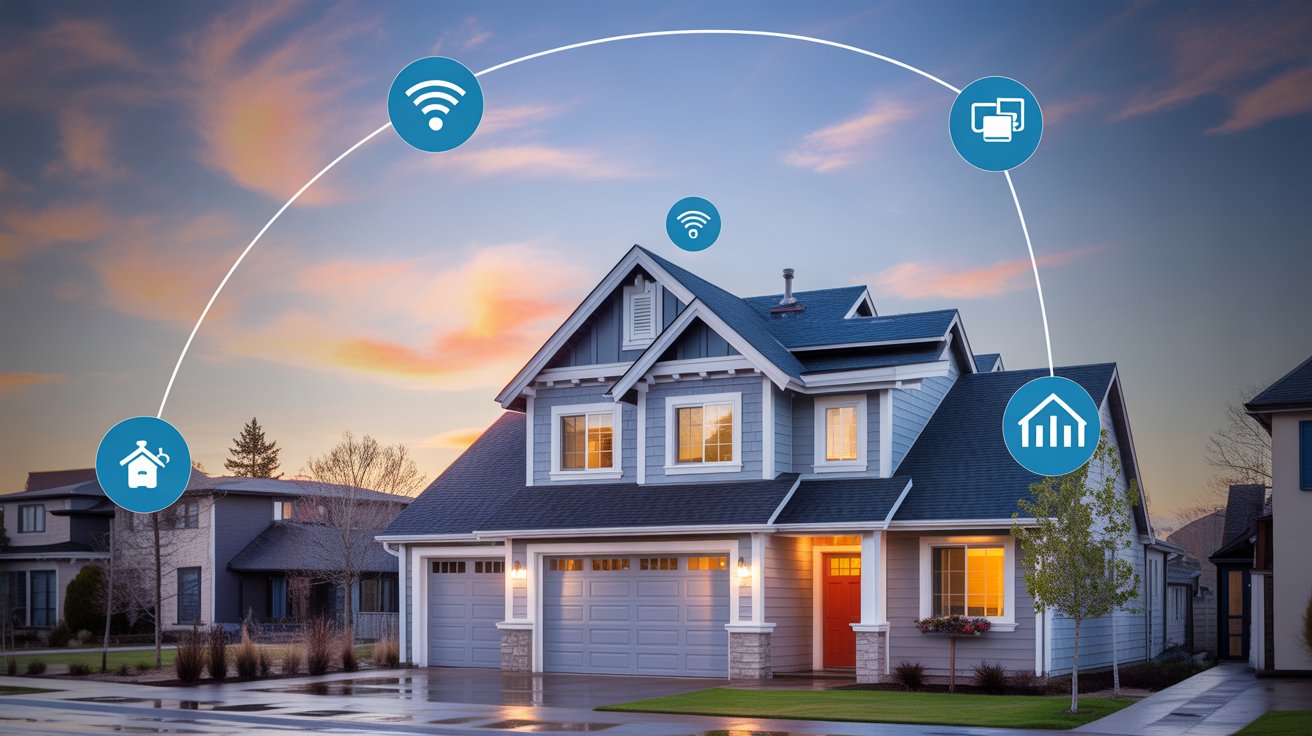Thanks to advances in home automation, it’s now possible to control lighting, heating, security, and household appliances from a simple smartphone or via voice assistants like Alexa, Google Assistant, or Siri. However, one challenge remains: the universality of these systems. Each brand offers its own standards, making interconnecting devices difficult. But the future seems to be heading toward harmonized protocols and standardized home automation.

The challenge of universality in the connected home
One of the main obstacles to the widespread adoption of home automation is the fragmentation of ecosystems. Currently, a user may be forced to juggle multiple applications and hubs to manage their connected devices. For example, a Nest security camera doesn’t always communicate with a Netatmo thermostat, and Philips Hue lighting may require an additional bridge to work with Apple’s HomeKit.
The lack of a universal standard hinders seamless integration and complicates the user experience. This impedes market growth, as consumers are hesitant to invest in equipment that may not be compatible with their current or future systems.
Matter: A decisive turning point for universality
Faced with this problem, several tech giants decided to collaborate to create a single standard: Matter. This protocol, supported by Apple, Google, Amazon, nd the Zigbee Alliance (now the Connectivity Standards Alliance), aims to guarantee interoperability between different connected home devices regardless of brand.
Launched in 2023, Matter is based on open and universal foundations that allow manufacturers to ensure their products are compatible with all existing voice assistants and platforms. It operates on IP and Thread technologies, thus facilitating the integration of diverse devices without requiring additional hubs.
With Matter, users will be able to purchase a smart home device and add it to their home network without worrying about compatibility. This advancement could accelerate the adoption of smart homes and pave the way for innovations.
Artificial intelligence at the service of universality
The other key factor in the future of the connected home is the increasing integration of artificial intelligence (AI). Today, voice assistants are capable of learning users’ habits and automating certain tasks, such as adjusting the temperature according to the weather or adjusting the lighting according to the time of day.
With the development of advanced AI, we could see the emergence of systems capable of translating and unifying the protocols of different devices. For example, an AI-based home automation assistant could understand each brand’s proprietary languages and act as a universal interpreter, unsuring perfect compatibility between all the equipment in a home.
The future of the connected home: towards a seamless and centralized experience
The evolution towards total universality in the connected home rests on several pillars:
- Unification of protocols with Matter and other open standards.
- Developing AI to manage interoperability and automate the user experience.
- Cloud and edge computing for intelligent and secure data management.
- Enhanced security with cyberattack protection solutions adapted to the hyper-connectivity of homes.
Ultimately, the connected home could function as a uid ecosystem, where all devices communicate naturally, adapt to the needs of the occupants, an, are controlled from a single centralized interface.
Challenges to overcome for widespread adoption
While universality is on the way, several obstacles remain to be overcome:
- Manufacturer adoption: Some players may hesitate to adopt Matter, preferring to maintain their proprietary ecosystems to retain their customers.
- Upgrading existing equipment: Many devices currently on the market are not compatible with the new standards and will need to be updated or replaced.
- Cybersecurity: greater interoperability also means more potential vulnerabilities. Manufacturers will need to strengthen their security protocols to prevent hacking and malicious intrusions.
- Accessibility and cost: the integration of universality into the connected home should not be limited to wealthy households. The prices of equipment and subscriptions to home automation services must be accessible to a wide audience.
A new era for the connected home
Universality is the future of the connected home. Thanks to standards like Matter and advances in artificial intelligence, users will soon be able to enjoy a more motherly more intuitive, and more secure experience . The ultimate goal is to enable everyone to live in a smart environment, free from technological constraints, where all equipment interacts harmoniously to improve the comfort and energy efficiency of homes. The challenge now lies in the hands of manufacturers and developers: will they choose openness and full compatibility? The future of the connected home depends on it.
